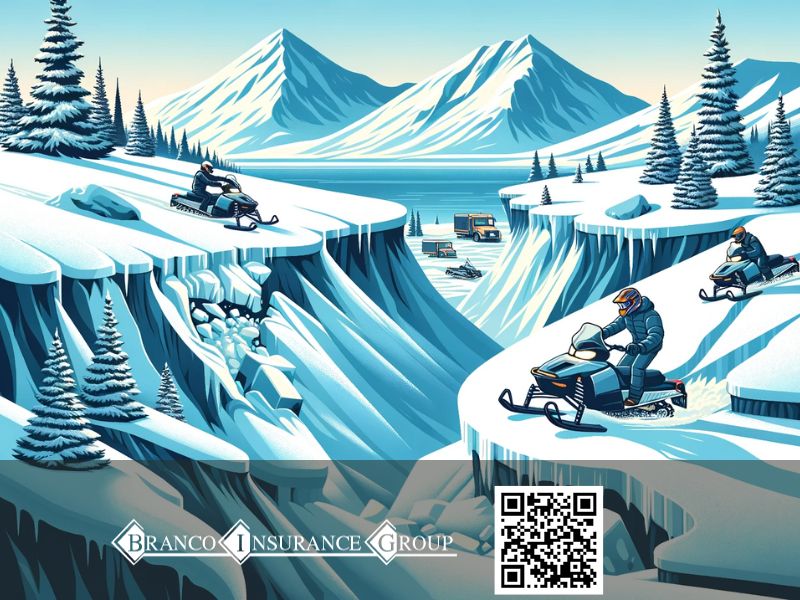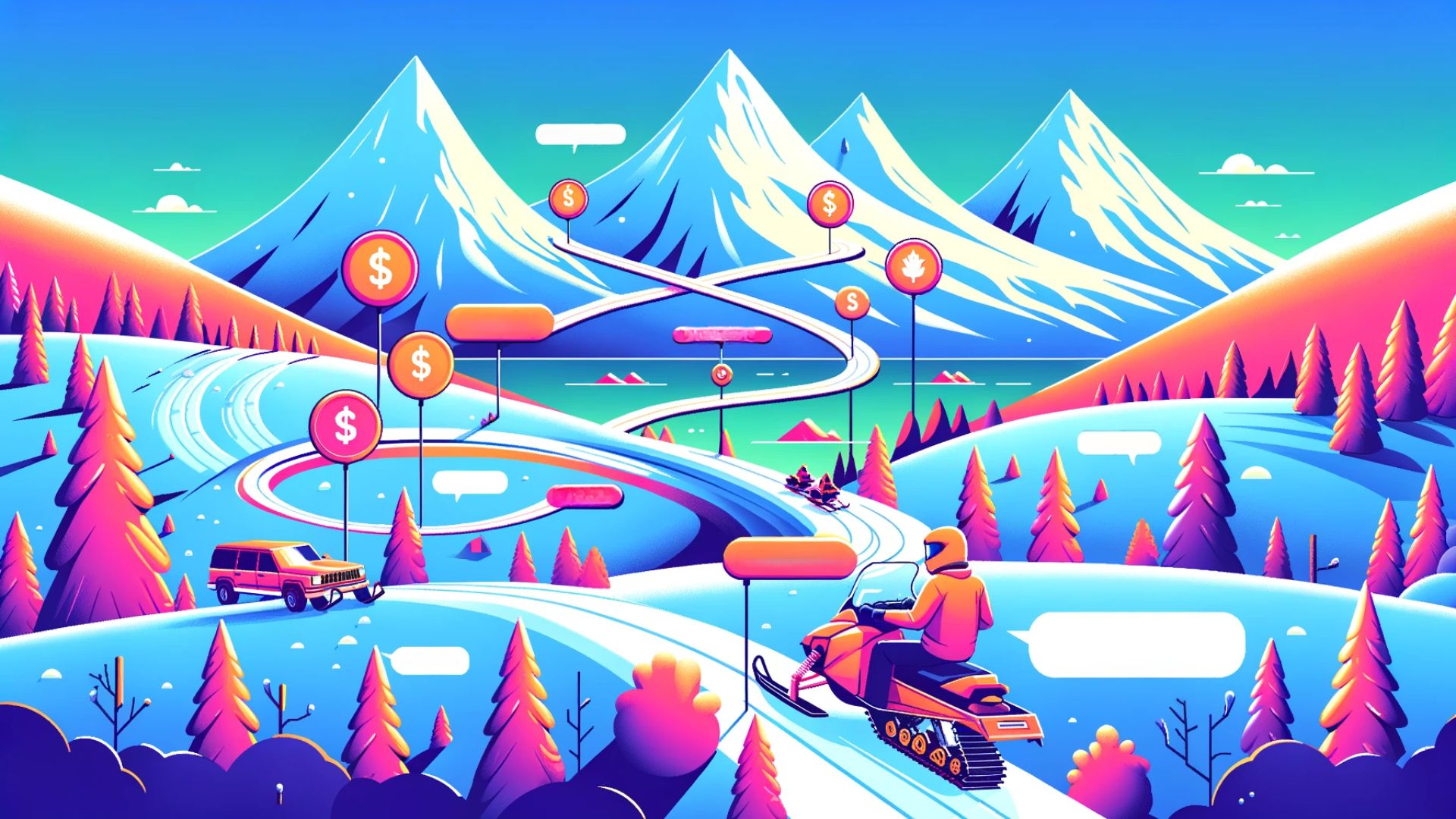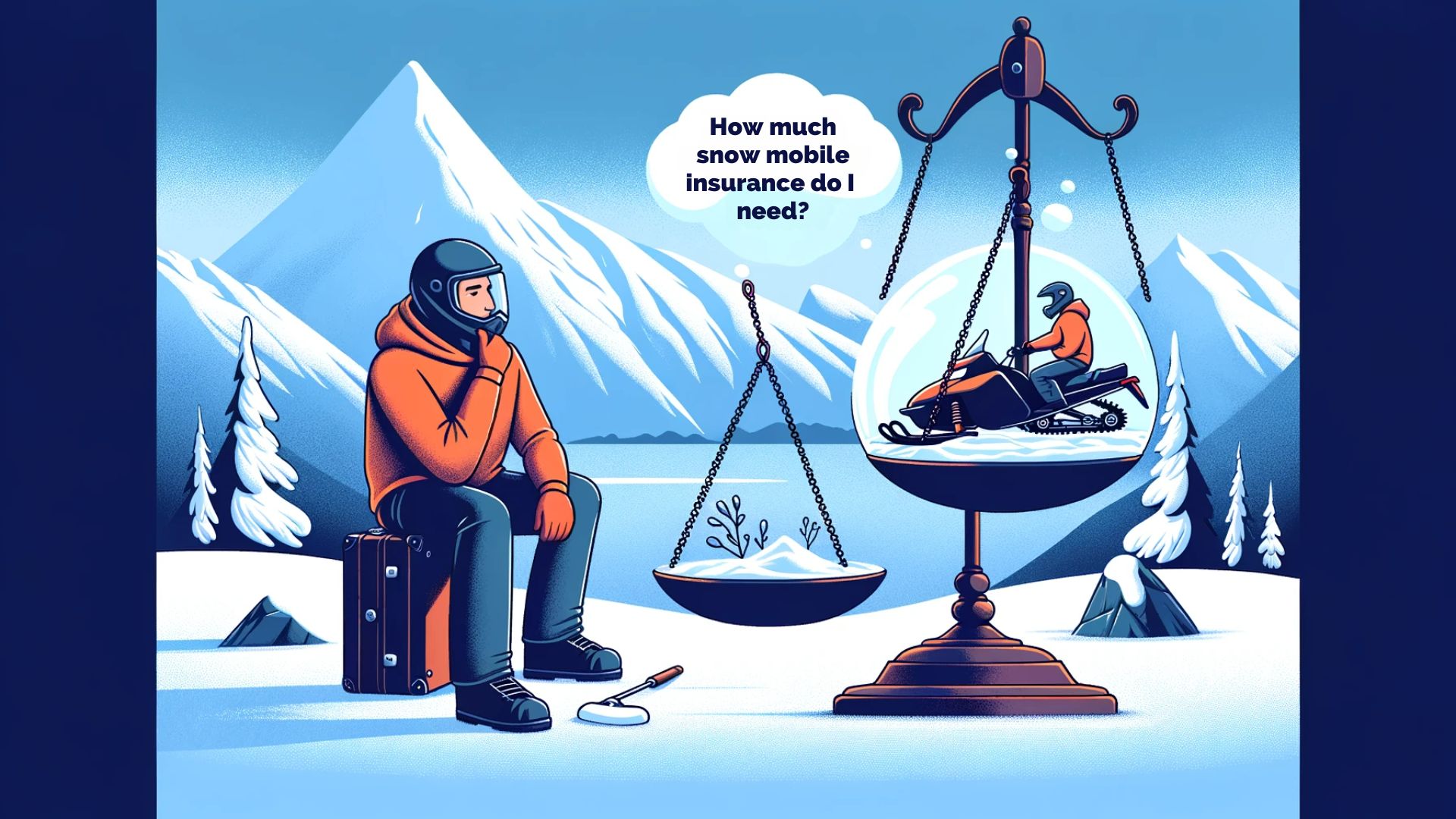
Mental Health Awareness Month: Prioritize the Mind, Support the Heart
May is Mental Health Awareness Month, a time to reflect on the importance of emotional well-being and the invisible battles many face daily. At Branco

Snowmobile insurance provides important protection for snowmobilers. Policies offer coverage options to shield you from liability in case of accidents causing bodily injury or property damage. Comprehensive and collision coverage through snowmobile insurance also pays for repairs or replacement if your sled is damaged or stolen.
Snowmobile insurance can be purchased as a stand-alone policy from specialty providers. It may also be available as an add-on or rider to an existing auto or homeowners insurance policy. Policies are available on both an annual and short-term basis. Coverage is generally mandatory if you lease or finance your snowmobile.
Snowmobilers looking into insurance will find options for liability, collision, comprehensive, medical payments, uninsured motorist, accessory, safety equipment, towed equipment, and increased liability coverage. Discounts may apply for multiple snowmobiles, homeowners, safety courses, anti-theft devices, and prompt payment.
Though snowmobiling is a fun winter activity, it carries significant risks. Riding at high speeds in cold, snowy conditions leaves you vulnerable to accidents. Snowmobile rollovers and collisions are common. Breakdowns in remote areas can also leave you stranded.
Without proper insurance, you may end up paying high out-of-pocket costs for:
Snowmobile insurance provides vital financial protection. It covers damage from collisions, accidents with animals, weather events, fire, vandalism, and theft. Liability coverage shields you from high legal and medical bills for harm caused to others.
Even if not mandatory in your state, having coverage is wise. It secures you from potentially bankrupting situations that could arise from snowmobiling risks.
Table 1: Factors Affecting Snowmobile Insurance Premiums
Factor | Description | Effect on Premium |
Driving Record | Past accidents or violations raise the risk | Increase |
Experience | Less experienced riders = higher risk | Increase |
Sled Type | High-performance models cost more to insure | Increase |
Location | Areas with more accidents/thefts have higher premiums | Varies |
Age | Youth riders have higher loss statistics | Increase for young operators |
Safety Features | Anti-theft devices lower the probability of claims | Decrease |
Coverage/Limits | Higher coverage levels raise premiums | Increase for more coverage |
The main types of snowmobile insurance include:
Optional add-ons provide extra protection:
Snowmobile insurance rates depend on several factors, including:
Higher-performance sleds cost more to insure. Youthful operators also pay increased premiums in some cases. Taking a snowmobile safety course can help lower rates. Comparing quotes from multiple insurers ensures you get the best deal.

Snowmobile insurance policies are comprised of several main components that provide coverage for different risks involved with operating a sled. The key types of snowmobile insurance include liability, collision, comprehensive, and optional add-ons for accessories, safety gear, and more. Understanding what each covers will help you select the right protection.
Table 2: Snowmobile Insurance Coverage and Limits
Coverage | Description | Typical Limits | Higher Available Limits |
Bodily Injury Liability | Covers medical expenses and related costs for injuries to others | $25,000 per person $50,000 per accident | $50,000/$100,000 $100,000/$300,000 or more |
Property Damage Liability | Covers repairs or replacement for damage caused to others’ property | $10,000 | $25,000 or higher |
Collision | Repairs or replacement cost for your snowmobile if damaged in an accident | Full repair or replacement cost | |
Comprehensive | Covers damage from non-collision events | Full repair or replacement cost | |
Accessories | Covers theft or damage to aftermarket parts | $1,000-$3,000 | Higher limits available |
Safety Apparel | Replaces stolen or damaged riding gear | Specific limits based on value | |
Medical Payments | Covers medical costs for injuries to you, passengers, and others | $1,000-$5,000 | Higher limits available |
Liability insurance is the most essential component of a snowmobile policy. It covers you if you are legally responsible for bodily injury or property damage caused to others in an accident.
Without liability insurance, you could be sued directly by injured parties and held personally and financially accountable. Liability coverage through your insurer defends you in court and pays covered costs up to the limits of your policy.
There are two main types of liability protection:
Bodily injury liability pays for medical expenses, rehabilitation, lost wages, pain, and suffering when injury results from an accident you cause while operating your snowmobile. This helps cover costs like:
Typical policies start at $25,000 per person and $50,000 per accident. Higher limits of $50,000/$100,000, and $100,000/$300,000 or more are available for increased protection.
Property damage liability helps pay for physical damage you cause to someone else’s property with your snowmobile. This includes:
Typical coverage limits start at $10,000 but can go up to $25,000 or higher. This helps cover repair or replacement costs from damage you’re liable for.
Collision insurance pays for damage to your own snowmobile when it is involved in an accident. This includes collisions with:
Compensation can include the cost of repairs or total loss replacement if your snowmobile is damaged beyond repair. Rates are based on the value of your sled. Collision coverage typically has a deductible of $250-$500 or higher that you pay out-of-pocket before coverage kicks in.
Comprehensive coverage is also known as other than collision. It covers damage to your snowmobile from non-collision events including:
Comprehensive also pays if your snowmobile breaks through ice or overturns without hitting anything. It provides protection while riding and during storage. Like collision, it typically has a deductible that must be paid before coverage applies.
Comprehensive and collision insurance are key for protecting your snowmobile investment against physical damage from accidents or other covered perils.

Beyond basic liability, collision, and comprehensive, snowmobilers can elect to add more coverage as needed. Additional options like accessories, safety gear, and rental provide extra protection.
Snowmobile accessories like trailers, covers, gauges, and other aftermarket parts are not automatically covered under standard policies. Accessories coverage adds protection for these items when added to a policy.
It covers theft of accessories and damage from accidents, weather, fire, and other covered losses. Coverage limits from $1,000 up to $3,000 or more can be selected to match the value of your extra equipment.
Helmets, suits, boots, goggles, and technical riding gear are expensive to replace if damaged. Safety apparel coverage pays for replacement if your clothing is stolen or damaged in a covered incident.
Specific dollar limits are chosen based on the value of your gear. This ensures you are covered for the high cost of today’s protective snowmobile apparel.
If you pull a trailer or sled behind your snowmobile, adding towed equipment coverage protects against theft or damage. It covers trailers as well as the contents inside. Limits match the value of the towed equipment.
When transporting your snowmobile on a trailer to and from the trails, accidents or theft can also occur. Transport trailer protection pays for damage to your trailer in accidents, fire, theft, and other losses when your snowmobile is on board.
Standard snowmobile policies have set limits for coverages like bodily injury liability, property damage liability, collision, and comprehensive. You can elect higher limits for greater protection.
This ensures you are covered for the full value of medical bills, property damage, and sled repairs or replacement in more serious accidents. Speak with your insurer about increased limit options and associated costs.
If you rent a snowmobile for a day, weekend, or longer trip, your own policy likely won’t provide coverage. Rental snowmobile insurance covers liability and physical damage when operating a rented sled.
It protects against financial loss if the rental is damaged or stolen. Some providers may include this automatically with annual policies. Others require adding it as an endorsement for a fee.
Snowmobile insurance can be expensive, especially for high-performance sleds. But there are many potential discounts that can help you save on premiums.
Insure multiple snowmobiles on the same policy to qualify for a multi-sled discount. Most insurers offer savings of 5-15% for covering two or more snowmobiles.
The more sleds insured, the greater the savings. This rewards snowmobilers with a fleet of 2-3 vehicles or more. Families with multiple riders can benefit.
Bundle your snowmobile coverage with other policies like auto, homeowners, or life insurance to earn a multi-policy discount. Savings range from 10-20% typically.
Insure your:
With the same provider as your snowmobile for maximum savings. The more policies bundled, the higher the discount.
Completing an accredited snowmobile safety course earns a discount from many insurers. Courses teach riding laws, emergency skills, ethics, and best practices.
Discount rates average around 10% but can go up to 15-20%. Take an approved class run by your state, the ASI, SMSA, or other organization.
Pay your snowmobile insurance premium promptly by the due date and you may earn a discount of 5-10% on renewal policies. This rewards responsible policyholders who pay on time consistently.
Already have homeowner’s insurance? You may qualify for a homeownership discount of up to 15% from some snowmobile insurers. This rewards mature, responsible policyholders who own a home.
Ask your agent or insurer about qualifying for this discount if you own a home or condo you insure. Submit proof of current homeowner’s coverage.
When getting snowmobile insurance, there are a few key factors to keep in mind that may impact your coverage needs and premiums.
Snow conditions, terrain, and riding styles vary across different regions. Riders in mountain states face more risks than in flatland areas. Alaska and Canada present remote conditions.
Regional differences in average snowmobile speed, accidents, theft, and more lead insurers to adjust rates and policies by location. Where you ride impacts options and pricing.
Younger, less experienced snowmobilers generally pay higher premiums. Statistics show higher accident rates for this demographic.
Conversely, mature riders with clean records may qualify for experience-based discounts. Age and skill level influence risk factors used to determine rates.
High-performance snowmobiles with turbocharged engines, long tracks, and other enhancements cost more to insure.
Modified sleds have increased speed and power. They carry an added risk of damage in case of accidents or improper handling. Insurers charge higher premiums for sport models versus utility sleds.
Riding off public trails on unmarked terrain can invalidate coverage in some policies. Sticking to designated trails reduces risk exposure for insurers.
Review your policy carefully to see if off-trail riding is excluded or limited. This activity increases the chances of accidents and claims.
Suffering a breakdown far from home can lead to costly lodging and transportation expenses. Some policies cover these costs if your trip is interrupted.
Ask about adding trip interruption coverage for remote trail riding. It reimburses for meals, hotels, and ride shares if your sled is disabled away from home.
Theft and storm damage can happen while your snowmobile is being transported or stored. Make sure coverage extends to these scenarios before assuming you are protected.
If your snowmobile is damaged or you need liability coverage after an accident, follow these steps for filing and managing a claim.
Table 3: Snowmobile Insurance Claim Documentation
Document | Details |
Police Report | Official report of accident or incident |
Repair Estimate | Itemized estimate of damage from shop |
Photographs | Dated photos documenting damage |
Medical Bills | Copies of treatment invoices |
Rental Receipts | For reimbursement of rental fees |
Proof of Value | Sales receipt, loan docs |
Promptly report any accident, injury, theft, vandalism or other incident to both the police and your insurance provider. Give a full account of what happened and how your snowmobile was involved.
Provide contact info for others involved and any witnesses. Ask what documentation like photos or police reports will be needed to support your claim.
An adjuster dispatched by your insurer will inspect the damage to your snowmobile firsthand. Point out all areas affected. The adjuster will decide if repairs make sense or if the sled is a total loss.
You may get a damage estimate from a repair shop you trust for comparison. Any discrepancies can be negotiated between shops and the adjuster.
For repairable damage, your insurer will issue payment to the repair shop minus your deductible once an agreed-upon estimate is reached. Ask about coverage for a rental snowmobile while yours is in the shop if needed.
Review the completed repairs closely before approving the work. Test operate your snowmobile carefully to ensure proper mechanics. Report any issues immediately.
If your snowmobile is deemed a total loss, your insurer will typically issue actual cash value or purchase price (minus deductible) toward buying a replacement sled. Total loss is declared when repair costs exceed value.
You can use those funds as a down payment on a new snowmobile from a dealer. Gap insurance can cover the difference if you still owe more than the payout on a financed sled.
If anyone is injured in an accident, seek medical attention immediately. Provide your insurance information to the hospital or doctor’s office to have bills sent directly for processing.
Submit copies of your own bills for reimbursement. Track payments and follow up on any delay. This ensures accident victims get compensated for medical costs under your medical payments coverage.
Shopping around and having the right coverages dialed in can help you secure affordable snowmobile insurance. Use these tips to get the lowest premiums.
Table 4: Comparing Snowmobile Insurance Quotes
Insurer | Liability Limits | Comprehensive Deductible | Annual Premium | Discounts Applied |
Insurer 1 | $50,000/$100,000 | $500 | $850 | Multi-sled, Safety course |
Insurer 2 | $50,000/$100,000 | $500 | $980 | N/A |
Insurer 3 | $50,000/$100,000 | $500 | $750 | Multi-policy, Prompt payment |
Rates for the same sled can vary significantly between insurance companies, so compare lots of quotes. Get at least three quotes from major national and regional providers.
Also, check with local snowmobile specialists. Online comparison tools can give instant rate estimates from top insurers for quick shopping.
Find an insurer that offers multi-policy discounts for bundling your snowmobile with auto or home insurance. Take safety courses, insure multiple sleds, pay annually, and maintain a clean driving record to qualify for the maximum discounts.
Ask each agent what savings opportunities apply. Factoring in discounts can make certain providers cheaper than others. Bundling and discounts provide the biggest premium reductions typically.
Balance your coverage levels and deductibles to get the coverage you need at affordable rates. Higher liability limits or low deductibles raise rates. Consider how much risk you can shoulder with higher deductibles to save.
But don’t skimp too much. Having adequate coverage and reasonable deductibles is better than major gaps in protection. Evaluate your finances and risks.
Independent agents that specialize in snowmobile insurance have expertise in this niche market. They represent multiple providers and know how to optimize policies for cost and coverage.
Ask friends for local agent referrals. An agent that rides themselves is ideal. Their firsthand experience with snowmobile risks can craft the right policy.
Snowmobile insurance provides vital protection every rider needs. Liability, collision, and comprehensive coverages all serve important purposes. Consider optional add-ons as well to complete your protection.
Shop multiple insurers and maximize discounts to get the best rate. Understand regional risk factors and how age, experience, and sled type impact premiums. Choose appropriate coverage limits and deductibles. Work with a specialized agent to optimize your policy.
Snowmobiling involves inherent risks that make insurance essential. Accidents happen quickly at high speeds on snowmachines. Theft is also a concern for expensive sleds. Don’t wait until it’s too late – make sure you are covered.
At Branco Insurance Group, our experienced agents know snowmobile insurance inside and out. We’ll help you craft the perfect policy to fit your sled, budget, and riding needs. If you have any questions or want to request a free quote, contact us today.
The costs of repairs, lawsuits, or medical bills without insurance could be financially devastating. Protect yourself, your passengers, and your snowmobile with a tailored policy this season.
At a minimum, you should have liability coverage to protect you if you injure someone or damage property with your sled. Collision and comprehensive coverage are also recommended to cover repairs and replacement if your snowmobile is damaged in an accident, stolen, or experiences weather-related damage. Accessories coverage will insure any aftermarket parts like trailers. Consider adding medical payments and uninsured motorist coverage for further protection.
In most cases, a homeowners insurance policy will not provide any coverage for your snowmobile. Your sled needs its own dedicated snowmobile insurance policy to be protected. Don't assume you're covered even if the snowmobile is stored in your garage.
Standard comprehensive coverage on a snowmobile insurance policy will pay for water damage if your sled breaks through ice. This covers the costs to repair or replace your snowmobile after an ice incident. Make sure your policy does not exclude coverage for going through the ice before assuming you're covered.
Yes, comprehensive coverage on your snowmobile policy will pay for the replacement cost if your sled is stolen. Be sure to promptly report the theft to police and your insurer. Keep records of the purchase price and accessories to support making an insurance claim. Anti-theft devices can reduce your premiums.
The average cost for snowmobile insurance is $50 to $300 annually in premiums. Rates depend on the sled's value, your driving record, your age and experience level, coverage types, and other factors like discounts. High-performance models cost more to insure than utility snowmobiles.
Auto insurance policies do not provide any coverage for snowmobiles. Even if your sled is transported on a trailer pulled by your pickup, it would not have protection under your truck's policy. You need to purchase specific snowmobile insurance for coverage.

May is Mental Health Awareness Month, a time to reflect on the importance of emotional well-being and the invisible battles many face daily. At Branco

Two of Naugatuck’s long-standing insurance professionals have joined forces. Beginning on April 14th, the Healy-Lynn Insurance Agency has become a division of Branco Insurance Group.
